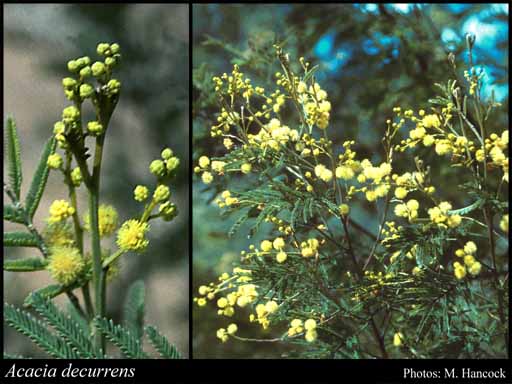- Reference
- Sp.Pl. [Linnaeus] 4:1072 (1806)
- Conservation Code
- Not threatened
- Naturalised Status
- Alien to Western Australia
- Name Status
- Current
Tree, 2-10 m high. Fl. yellow, Jul to Sep. Roadsides, creeklines & wasteland.

Distribution
- IBRA Regions
- Avon Wheatbelt, Jarrah Forest, Swan Coastal Plain, Warren.
- IBRA Subregions
- Katanning, Northern Jarrah Forest, Perth, Southern Jarrah Forest, Warren.
- Local Government Areas (LGAs)
- Albany, Boyup Brook, Busselton, Chittering, Collie, Dardanup, Donnybrook-Balingup, Harvey, Kalamunda, Kojonup, Manjimup, Murray, Narrogin, Serpentine-Jarrahdale.
Management Notes (for the Swan NRM Region)
General Biology. Growth form. Small tree. Reproduction. Seed. Dispersal. Water, birds, ants, wind, garden refuse, soil movement. Vegetative regeneration strategy. Resprouts. Seedbank persistence. Long, 5+ years. Fire response. Fire stimulates mass germination of soil stored seed. Adult plants can resprout from base following fire.
Additional information. Origin. Eastern Australia. History of use/introduction. Garden escape.
Suggested method of management and control. Hand pull seedlings. Fell mature plants. Young plants may occasionally resprout. Apply 250 ml Access® in 15 L of diesel to basal 50 cm of trunk (basal bark) or cut and paint with 50% glyphosate or drill and fill. Older plants can be ringbarked. Read the manufacturers' labels and material safety data sheets before using herbicides. For further information consult the Australian Pesticides and Veterinary Medicines Authority to determine the status of permits for your situation or state.
Management Calendar
| Calendar Type | Jan | Feb | Mar | Apr | May | Jun | Jul | Aug | Sep | Oct | Nov | Dec | Comments |
|---|---|---|---|---|---|---|---|---|---|---|---|---|---|
| Flowering | O | Y | Y | Y | O | ||||||||
| Fruiting | Y | O | O | Y | Y | ||||||||
| Optimum Treatment | O | O | O | Y | Y | Y | Y | O | O | O |
Legend: Y = Yes, regularly, O = Occasionally, U = Uncertain, referred by others but not confirmed.
References
- Brown, K. & Brooks, K. (2002) Bushland Weeds: A Practical Guide to their Management. Environmental Weeds Action Network, Greenwood.
- Hussey, B.M.J., Keighery, G.J., Dodd, J., Lloyd, S.G. & Cousens, R.D. (2007) Western Weeds. A guide to the weeds of Western Australia. 2nd Edition. The Plant Protection Society of Western Australia, Victoria Park.
- Maslin, B.R. (2001) Wattle: acacias of Australia. Australian Biological Resources Study, Canberra. Department of Conservation and Land Management, Perth.
- Moore, J.H. & Wheeler, J. (2008) Southern weeds and their control. DAFWA Bulletin 4744.
- Muyt, A. (2001) Bush invaders of South-East Australia: A guide to the identification and control of environmental weeds found in South-East Australia. R.G. & F.J. Richardson, Melbourne.
- Navie, S. & Adkins, S. (2008) Environmental Weeds of Australia, An interactive identification and information resource for over 1000 invasive plants. Centre for Biological Information Technology, The University of Queensland.
- Peltzer, S. (2008) Watch out for weedy wattles. Southcoast NRM, Department of Agriculture and Food.
- Richardson, D.M. & Klugeb, R.L. (2008) Seed banks of invasive Australian Acacia species in South Africa: Role in invasiveness and options for management. Perspectives in Plant Ecology, Evolution and Systematics, 10 (3): 161-177.
- Whibley, D.J.E. & Symon, D.E. (1992) Acacias of South Australia. The Flora and Fauna of South Australia Handbooks Committee, Adelaide.